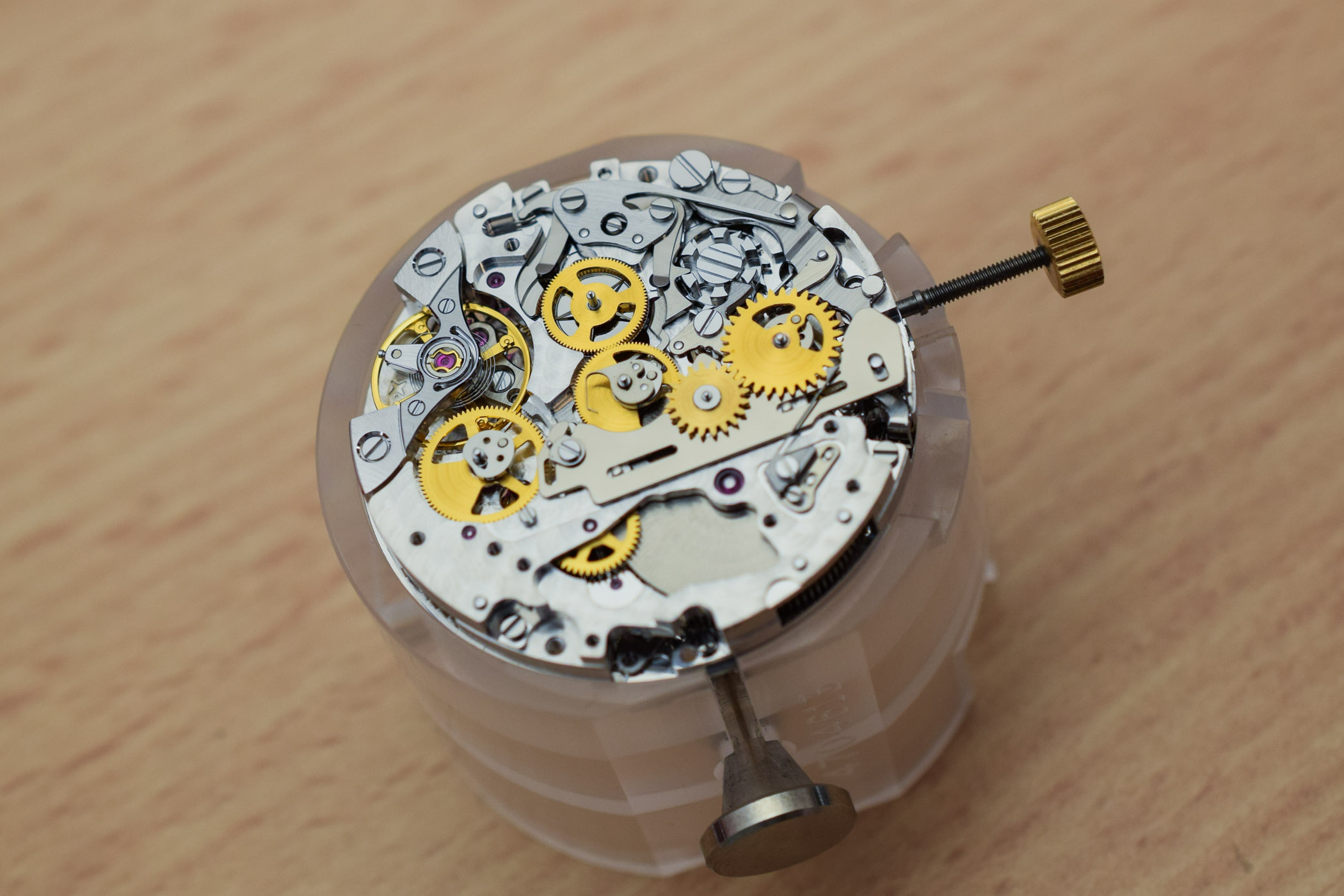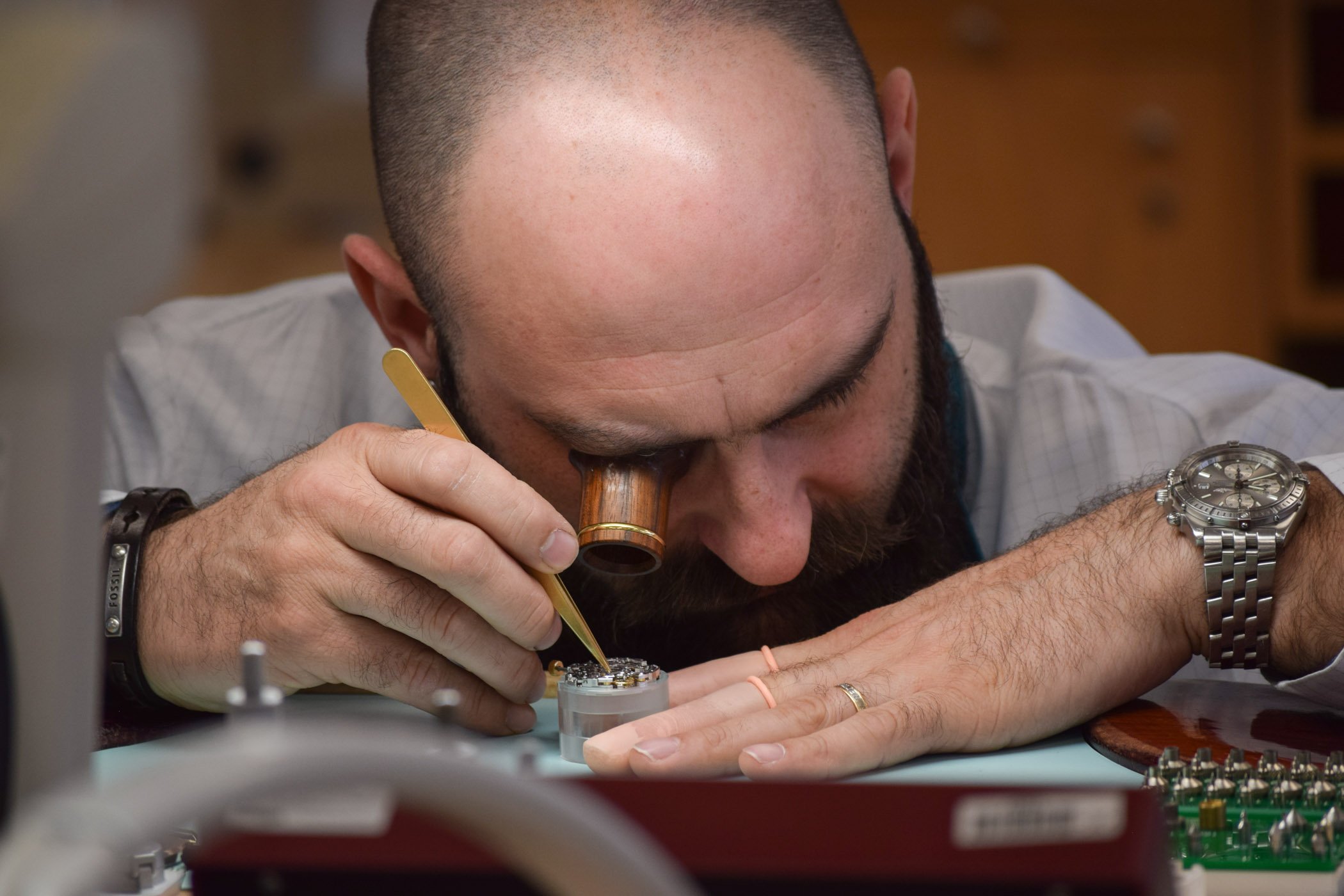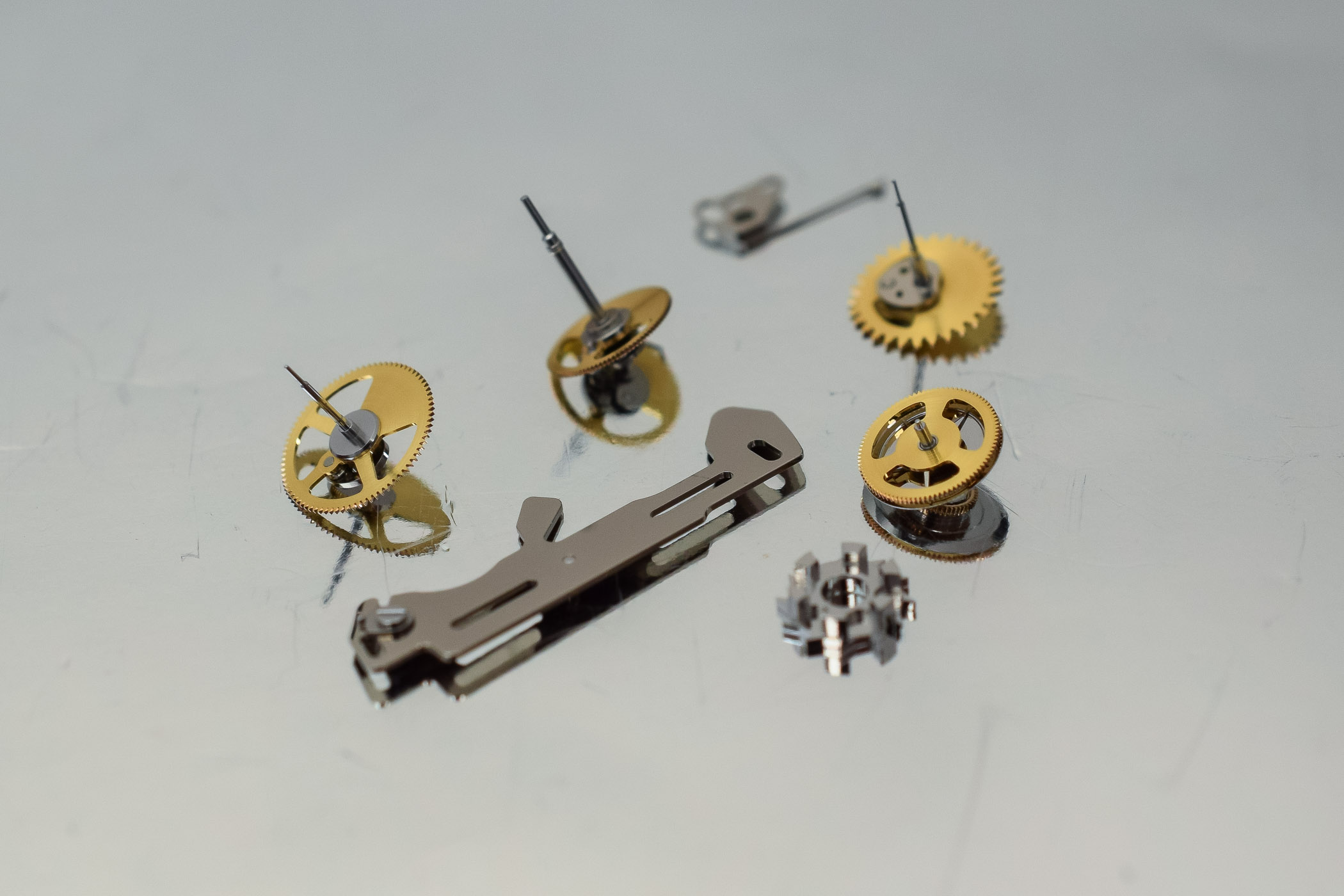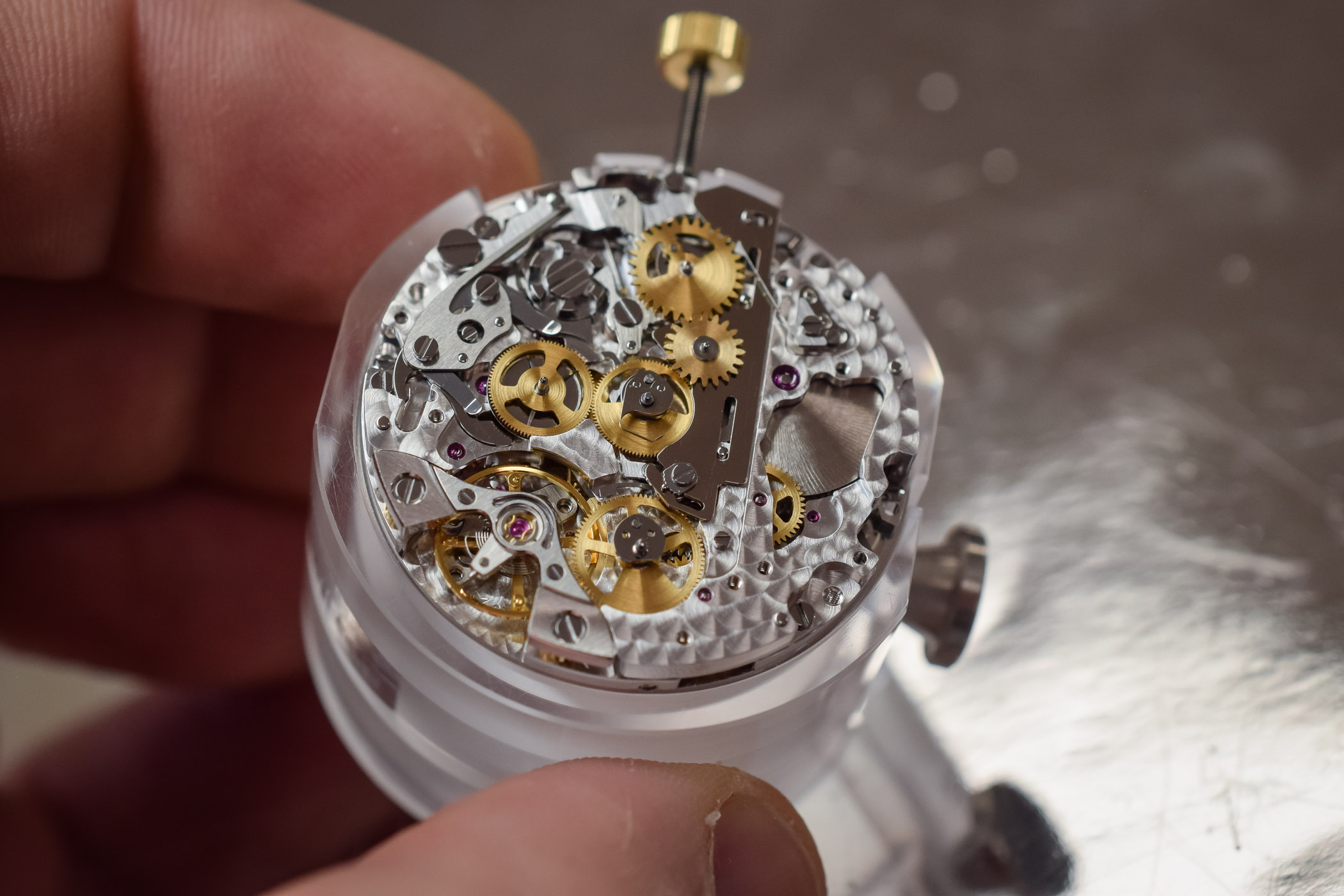Vaucher Manufacture Fleurier Launches Its Integrated, High-Frequency, Column-Wheel Chronograph

For once, this won’t a product-related news – understand here, the launch of a new watch – that we will share with you. Instead, we’ll look at the other side of the industry: suppliers. Vaucher Manufacture Fleurier, one of the most respected movement constructors of the Swiss industry, indeed unveils an integrated high-frequency column-wheel chronograph, the calibre Seed VMF 6710. And it truly is quite an interesting movement, to say the least.
The chronograph is, without doubt, one of the most popular complications. It’s also one of the complications that can be used on a daily basis, however, what most people do not realize, is that it is among the most complex mechanisms to design and manufacture. Chronograph movements are rare birds. Very few brands manufacture chronographs, and there are few existing calibres available on the market. So when we learned that Vaucher Manufacture was presenting a new chronograph, it caught our attention. The calibre 6710 is not completely new per se. It made its first appearance a couple of years ago, encased in the Parmigiani Fleurier Chronor – the stunning split-second chronograph awarded at the GPHG 2017. And at SIHH 2018, a shaped version of the movement without split-seconds was used to power the Parmigiani Fleurier Kalpagraph. It is now available to third-party brands.
Vaucher Manufacture holds a unique position among high-grade movement manufacturers, being one of the rare ones with ‘industrial’ production capacity. Vaucher is the movement manufacture of Parmigiani Fleurier, the manufacturer of Hermès movements and the engine-maker of several brands in the industry (Richard Mille, Corum, Baume et Mercier or Fabergé – to name but a few). The company is owned by the Fondation de Famille Sandoz and Hermès. For more information, read our introductory article about Vaucher here.
The calibre 6710 is a high-frequency integrated column-wheel chronograph. Measuring 13 ¼ ’’’ in diameter, this self-winding movement is a modern, compact construction, just under 7 mm thick. A close look at its design reveals that it combines several of the best practices from iconic chronographs (think El Primero, Rolex 4130 and FP 1185) and several innovations.
High frequency
The calibre 6710 operates at 36,000 vibrations per hour (5 Hz) – just like Zenith’s iconic El Primero. This allows for 1/10th of a second chronometer-certified precision. The balance is free sprung and features four inertia blocks. A full cock with twin supports ensures stability and shock resistance (reminding us of the Rolex 4130 and Rolex movements in general). Despite the high-frequency, the power reserve is of 65 hours (50 hours for the Zenith movement). The fast rotation barrel delivers regular torque and is wound by a gold central rotor.
Column-wheel, vertical clutch and one-piece reset hammer
This fast ticker features a column-wheel, the most traditional and noble command to start, stop and reset stopwatches and the standard for high-end chronographs. A solution found in most modern chronographs, the vertical clutch does not have the same appeal as the horizontal one, but it enables absolutely precise starts and stops. As its name indicates, with a vertical clutch, the connection of the chronograph mechanism with the timekeeping gear train is executed vertically and by friction, similar to the systems found in automobiles.
The theoretical advantages of vertical clutch chronographs are that there are no teeth to engage or disengage, a principle that may cause the jump of the chronograph seconds hand when the teeth mesh. Just like the Rolex 4130, the clutch is off-centered and drives the chronograph seconds and minutes only. To enhance efficiency, the chronograph hours are powered directly by the barrel. This allows the use of less force to power the chronograph mechanism.
The calibre 6710 (view with no bridges)
- Balance wheel
- Column-wheel
- Off-centered vertical clutch
- Reset hammer
- Chronograph minutes and heart cam
- Chronograph seconds and heart cam
- Chronograph hours and heart cam
A one-piece reset hammer slides across the mechanism to simultaneously reset the chronograph hours, minutes and seconds contacting the respective heart cams. This simple, efficient and reliable solution can be found, for instance, in the Frédéric Piguet 1185 calibre.
Like all Vaucher movements, the calibre 6710 is finely finished and can be personalized. The list of available options includes manual winding, a large date, and a split-seconds mechanism.
Overall, the calibre 6710 is a modern, high-grade, cleverly-engineered chronograph. Its design is aimed at performance, reliability, and efficiency positioning it as a serious competitor to the other two top-of-the-range self-winding column-wheel chronographs available on the market, the Frederic Piguet 1185 and the Zenith El Primero.
El Primero
Introduced in 1969, the iconic Zenith fast ticker was one of the very first automatic chronographs. It is an integrated construction with a column-wheel and horizontal clutch. The automatic winding is bi-directional with a power reserve of 50 hours. It operates at 36,000 vibrations/hours. In performing 10 jumps per seconds, the seconds and chronograph seconds hands mark off tenths of a second.
Frédéric Piguet 1185
The ultra-thin FP1180 chronograph was first released in 1987/88 in a hand wound version just 3.95 mm thick. Several versions followed including the caliber 1185 with automatic winding. It features a column-wheel and a vertical clutch. It beats at 21,600 vibrations per hour. The automatic winding is unidirectional with a power reserve in excess of 42 hours.
The FP1185 has been used and/or is still used by a number of prestigious brands including Vacheron Constantin, Audemars Piguet, Breguet, Blancpain (Frédéric Piguet has been absorbed by Blancpain) and Cartier – amongst others.
Rolex 4130
The 4130 is the Rolex in-house self-winding chronograph that replaced the El Primero-based 4030 caliber to power the Daytona in the early 2000s. Unlike the Zenith chronograph, this modern and robust movement features a vertical clutch. Its architecture incorporates fewer components than a standard chronograph, thereby enhancing the movement’s reliability. The automatic winding is bidirectional, the power reserve is of 72 hours.
For additional information: www.vauchermanufacture.ch. Want additional insight about chronographs? Read our technical perspective here.









